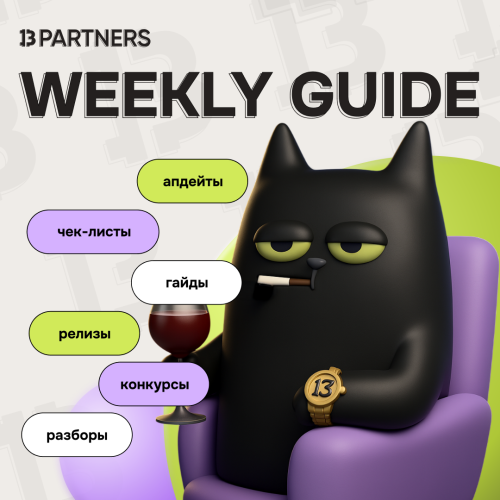How to drive traffic to Tier 1, 2, and 3 countries
 24.10.2025
24.10.2025

There is no universal GEO in arbitrage that fits every offer. Somewhere traffic is expensive, somewhere conversions are weak, and somewhere the audience is only just learning to buy online. To simplify the work, media buyers are used to splitting all countries into levels. This is an established classification used by both beginners and large teams. In this article, we look at how to work with Tier 1, 2, and 3 and which region to focus on depending on the vertical.
What are Tier 1, 2, and 3 countries?
Tier is both a level and a grouping. Each level has its own logic of traffic, pricing, and user behavior. This classification helps media buyers understand how to work with GEOs so they don’t burn budget in unfamiliar markets.
Tier 1 countries are developed regions with high household income. Clicks are the most expensive here, and payouts per offer are the largest. Users are accustomed to online purchases, but competition is huge. Any mistake in the funnel is costly.
Tier 2 countries are an intermediate zone. These regions have healthy economies and affordable traffic. Competition is moderate, the audience is active, and the click price doesn’t bite. In this GEO you can scale without draining the budget on tests.
Tier 3 means developing countries with cheap traffic and weak purchasing power. Volume and proper adaptation matter most here. Profit comes not from the bid, but from quantity.
The split by Tier is conditional, since countries move between levels over time. When the economy grows and online payments develop actively, a country moves up a step.
There is also Tier 4. Is arbitrage possible there? Theoretically yes, but in practice these countries are of little interest. This includes unstable and small countries where the tools needed for arbitrage are absent or technology is underdeveloped. Tier 4 includes Afghanistan, Syria, Sudan, North Korea, Malawi, and several other African states.
Tier 1: Strong markets with high competition
The specifics of Tier 1 make this level both a dream and a trial. Budgets are the largest, users the most demanding, and bids the highest. In this GEO, neither ad networks nor audiences forgive mistakes. Working at this level makes sense only if you have polished funnels and a substantial budget. As a rule, the CPC here is two to three times higher than in Tier 2 and Tier 3, but leads are higher quality.
Universal bundles don’t work here, and creatives must be adapted to language and cultural context. For example, Canada has two official languages, German audiences don’t always accept English-language copy, and visual style is crucial in Japan. Even if an offer is launched across several countries, the presentation must always be local. It’s also important to account for legal constraints. In some Tier-1 countries, gambling and financial offers are strictly regulated, so you need to check platform requirements and local rules before launch.
Tier 2: Balance between cost and quality
Audience income in Tier 2 is sufficient to buy, while users are not yet fatigued by advertising. Traffic is cheaper than in Tier 1, and in 2025 competition isn’t as high. Dating, subscriptions, sweepstakes, and info products work well here. Many solo media buyers and teams use these countries to scale successful bundles with mid-range budgets.
The main rule when working with Tier 2 is localization, so creatives should be in the audience’s language. You should also consider holidays and seasonal trends, as in some countries in this group, spikes in interest repeat each year by the calendar.
The specifics of Tier 2 make this segment a golden mean for media buyers. You can test new offers without critical risk and simultaneously earn solid profit.
Tier 3: Cheap entry and broad opportunities
The specifics of Tier 3 attract media buyers with low CPC. This is Asia, Africa, and parts of Latin America. There is a lot of traffic, but purchasing power is weak. Simple offers perform mobile subscriptions, physical goods, utilities. The key is not to apply European creatives as is. Simplicity and trust are critical. People react more to visuals than copy. Translating creatives into the local language is the bare minimum.
Fraud is higher in these regions, so quality control is necessary. A good tracker and anti-fraud filters are mandatory. At the same time, competition is low and the entry threshold is minimal. You can start even with a small budget to gain experience and collect stats. Tier 3 countries provide flexibility; it’s realistic to run tests and find working approaches. This level is chosen for starting out, learning, and quickly validating hypotheses.
How to choose the right GEO
The Tier choice depends on your task and vertical. If a beginner wants to run fast tests and understand how markets work, Tier 3 fits. When you need to scale a successful bundle, look at Tier 2. Tier 1 should be considered by those who already have a stable funnel, experience, and readiness to work under high competition.
When choosing a GEO, keep three things in mind: payment systems, laws, and economy. If a region lacks popular payment methods, even the most promising offer won’t work. Also check the country’s average income level. Product price should match the user’s purchasing power. Language matters too avoid stereotypes. English isn’t always a universal solution. Even in highly educated countries, the local language usually raises conversion and lowers CPL.
What affects performance
Campaign results depend on more than GEO. Consider user devices, response speed, and the share of users using online payments.
Mobile dominates almost everywhere, especially in Tier 3 countries where smartphone share reaches 80–90%. For such regions, a responsive landing and lightweight forms without unnecessary fields are a must.
Most CPA networks indicate in advance the Tier a given offer targets and which traffic is acceptable. Even neighboring countries within the same group can have different ad costs. The difference depends on competition, payment systems, and offer demand. It’s optimal to focus on a single GEO — this simplifies data analysis and spend control.
Conclusion
The country Tier classification helps build strategy and avoid blind budget spend. Tier 1 offers strong markets where those who understand mechanics and analytics win. Tier 2 is room for growth, combining reasonable CPC with a quality audience. For a flexible start and faster hypothesis testing, teams most often choose Tier 3. There is no universal GEO for all verticals, but a competent strategy and country-specific adaptation deliver results in any segment.




.png)
.png)